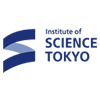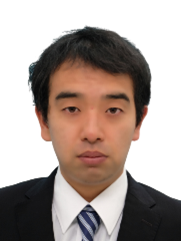
CLS
Laboratory for Chemistry and Life Science, Institute of Integrated Research, Institute of Science Tokyo
東京科学大学
総合研究院
化学生命科学研究所

LAST UPDATE 2024/08/26
-
研究者氏名
Researcher Name吉田将隆 Masataka YOSHIDA
助教 Assistant Professor -
所属
Affiliation東京科学大学 総合研究院 化学生命科学研究所
分子機能化学領域
Laboratory for Chemistry and Life Science, Institute of Integrated Research, Institute of Science Tokyo
Molecular functions -
研究キーワード
Research Keywords理論化学
ケモインフォマティクス
クラスター化学
触媒化学
Theoretical chemistry
Cheminformatics
Cluster chemistry
Catalytic chemistry
- 研究テーマ
Research Subject -
金属クラスターの構造および物性に関する理論的研究
Theoretical study on the structure and properties of metal clusters
研究の背景 Background of the Research
数原子から数十原子で構成されるごく小さな金属クラスターは、金属ナノ粒子以上に結晶構造を取り続けることが難しく、短時間で幾何構造が流動的に変動し続けるという性質を持ちます。そのため、その構造の観測には十分に高い時間分解能を持つ測定法が不可欠です。環状暗視野走査型透過電子顕微鏡法(ADF-STEM)は十分な時間分解能と空間分解能を持ち、これまでに結合形成や構造異性化等の多くの重要な瞬間が観測されていますが、射影の過程で立体的な構造情報が失われるという問題があります。
Small metal clusters, consisting of less than several tens of atoms, have a harder time maintaining a crystalline structure than metal nanoparticles, and their geometric structure tends to change fluidly over a short period of time. Therefore, a measurement method with sufficiently high time resolution is essential for observing their structure. Annular dark-field scanning transmission electron microscopy (ADF-STEM) has enough time and spatial resolution, and has been used to observe many important moments such as bond formation and structural isomerization. However, there is a problem in that three-dimensional structural information is lost during the projection process.
研究の目標 Research Objective
第一に、ADF-STEM像から得られる情報に対して第一原理計算やケモインフォマティクスなどを適用することで立体的な構造を復元することです。さらに、第一原理計算を用いてその金属クラスターの凝集エネルギーや電子状態を解析します。第二に、十分な数の金属クラスターについてデータを収集し、金属元素や構成原子数などの条件が金属クラスター構造にどのような影響を与えるかを統計学的手法により解析し、俯瞰的なマッピングを目指しています。
First, we aim to apply first-principles calculations and cheminformatics to the information obtained from ADF-STEM images to restore the three-dimensional structure. Furthermore, first-principles calculations are used to analyze the cohesive energy and electronic state of the metal clusters. Secondly, we aim to collect data on enough metal clusters and analyze, using statistical methods, how factors such as the type of metal element and the number of constituent atoms influence the structure of metal clusters, in order to achieve a comprehensive mapping.
研究図Figures

Fig.2. Metastable structure of alloy metal clusters on graphene. The structures are optimized with a combination of DFT calculation and genetic algorithm.
論文発表 / Publications
Angew.Chem.,127, 9948–9953 (2015), Chem. Commun,, 55, 4753-4756 (2019), Chem. Commun,, 55, 4753-4756(2019)
研究者連絡先 / HP
- yoshida.m.bo
 m.titech.ac.jp、yoshida.m.4788
m.titech.ac.jp、yoshida.m.4788 m.isct.ac.jp
m.isct.ac.jp - http://www.res.titech.ac.jp/~inorg/member/yoshida/